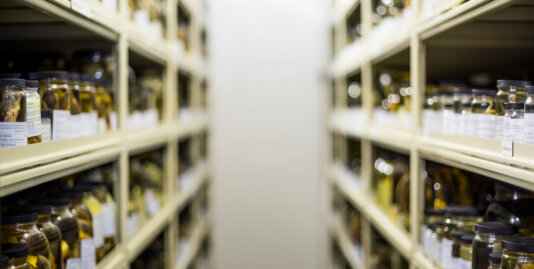- About
- Topics
- Picks
- Audio
- Story
- In-Depth
- Opinion
- News
- Donate
-
Signup for our newsletterOur Editors' Best Picks.Send
Read, Debate: Engage.
| January 18, 2022 | |
|---|---|
| topic: | Conservation |
| tags: | #Kenya, #Africa, #barcoding, #technology, #fishery |
| located: | Kenya |
| by: | Bob Koigi |
Kenya’s blue economy remains one of the country’s anchor sub sectors, currently contributing an estimated $1.7 billion to the national purse - predominantly from fisheries and tourism.
The fisheries and aquaculture industry, a vital subset of the blue economy contributes approximately $57 million each year to Kenya’s economy, which translates to 0.8 percent of the country's DGP. Up to 500,000 Kenyans rely on the industry to earn a livelihood directly with an additional 2 million benefitting indirectly.
Kenya's marine waters are home to over 6,000 species of high economic value, including crustaceans, sharks, rays, fish and marine mammals.
But despite being a vital source of food and nutrition security, the industry has been grappling with a myriad of challenges, including unregulated and unregistered fishing practices that have led to dwindling fish stocks in major fish sources such as the Indian Ocean and Lake Victoria, the largest lake in Africa.
Kenya loses an estimated Ksh.10 billion ($88 million) annually to illegal fishing practices that not only affect the fish population but also threaten conservation, food security and interferes with the vulnerable coastal regions.
To help tame fish and other aquatic life loss, guarantee quality and monitor trends in breeding to bolster fish population, Kenya is now courting technology.
The East African nation is now using a barcoding system and DNA to verify species' identity and create a huge repository that it hopes to use to sustainably grow the aquaculture industry, reduce smuggling of sea organisms and inform policies that will guide the sector.
Under the Centre for Aquatic Genomics, Forensics and Bioinformatics (AGFB), a laboratory unit that is managed by the Kenya Marine & Fisheries Research Institute, aquatic animals such as fish, crustaceans, mollusks, sharks and rays are being analysed in order to derive DNA barcode sequences for each species.
The process begins with researchers collecting various fish species from fishermen which are then photographed. Once they are taken to the laboratory, the fish fins are first stored in ethanol, then kept long-term in freezers at -20 degrees Celsius.
The laboratory has so far managed to generate barcodes for 15 aquatic species, and is in the process of barcoding another 100 species. More than 3,000 tissues of other aquatic organisms have been collected and are awaiting DNA barcoding.
"The aquaculture industry in Kenya remains one of the most under-exploited despite it being one of the largest sources of food and nutrition security at a time when other protein and non-protein sources continue to be unavailable," Jefa Tumwa, a marine biologist, told FairPlanet. "It hasn’t been given the attention it deserves and it could be a game-changer in providing household nutrition, income, jobs and economic growth."
"The decision to embrace technology to save and protect the industry is a welcome move and will go a long way in opening up the industry to more investments," Tumwa added.
Researchers are also betting on the barcoding exercise to enhance the quality of Kenya’s seafood that is sold to consumers, as concerns mount regarding the quality of seafood produce that has flooded the market following cheap imports from Asian countries, among them China, which make Kenyan products uncompetitive.
The barcoding project adds to the growing list of technology-oriented conservation initiatives that Kenya has espoused to protect flora and fauna. From an artificial intelligence technology used to save sea turtles and apps that reduce elephant poaching and tackle human-wildlife conflicts to satellite-linked GPS collars that protect rhinos - innovation has given Kenya's conservation agenda a new face.
"While technology has played a huge role in conservation in Kenya at a time when wildlife and maritime species face unprecedented threats, there is still so much that needs to be done," noted Tumwa. "Enemies of conservation, among them poachers and illegal fishers, are becoming daring and sophisticated in their operations. Tech-related conservation needs to [gain] the backing of government, international and local players and be embraced by local communities in order to seal any loopholes."
Image by Michael Groncki.

By copying the embed code below, you agree to adhere to our republishing guidelines.
